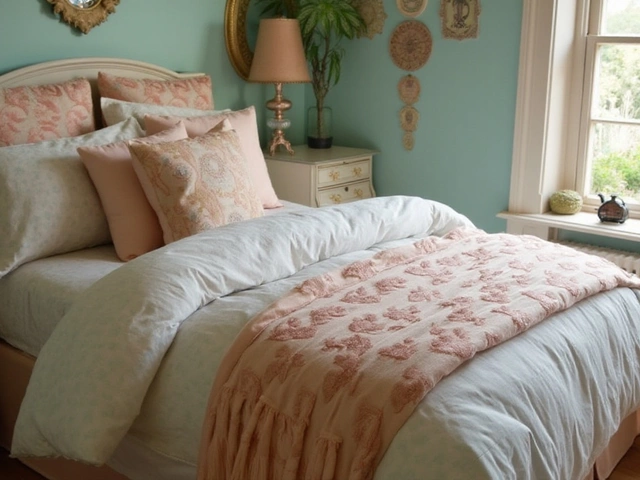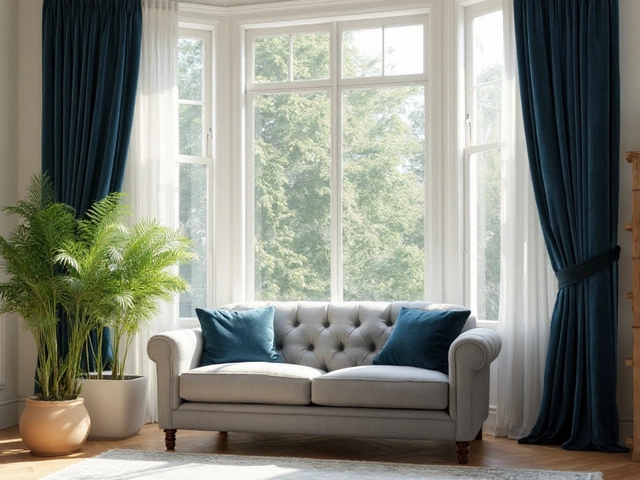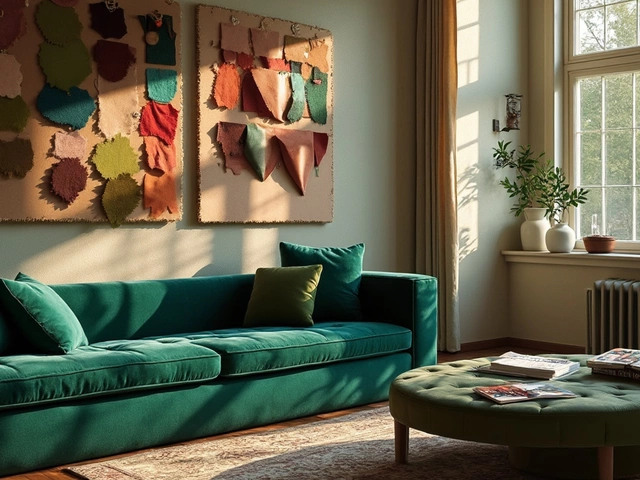Glass is glass, right? But when it comes to mirrors—and especially cheap mirrors—the details can change your whole experience. Picture setting up your dream vanity or picking something for your hallway, only to realize your reflection looks like a funhouse joke or the corners start chipping in weeks. Why are some mirrors so cheap, and do they pull their weight, or do you get exactly what you pay for? If you've scrolled past a $15 mirror online and wondered if it's a steal or a disaster waiting to happen, welcome to a world where price tags, glass types, and almost-invisible quality differences matter more than you'd think.
What Really Makes a Mirror "Cheap"?
The word “cheap” isn’t just about the price—it’s loaded with clues about production, materials, frame construction, and even factory standards. Most budget mirrors are cut thinner, with glass that’s only about 1/8-inch thick (compared to the higher-end standard of 1/4-inch). Thin glass can flex and warp, which means less optical clarity and reflections that make your face look oddly stretched or wavy. The reflective backing on these cheaper mirrors is also usually made of lower-quality aluminum instead of silver. That’s a double whammy for both reflectivity and longevity, since aluminum loses its shine and corrodes sooner when exposed to moisture—think of steamy bathrooms where dark, cloudy spots spread over a few months.
Another cost-saving secret: cheap mirrors are almost always mass-produced in countries with looser quality-control rules. Workers cut costs at every angle—from the backing adhesives to the paint or foil used on frames. You might get a gorgeous frame at first glance but notice the corners splitting or plywood backing sagging within a season. Many so-called “floating mirrors” use plastic masquerading as metal for mounting, and cheap plastic nearly guarantees wobbles, scratches, or even falls if you’re unlucky. Cheap mirrors also tend to have rougher, less polished edges; they skip treatments that higher-end brands use to prevent chips and cracks.
Here’s a quirky fact: According to a 2023 consumer goods report by the Home Improvement Institute, about 48% of budget mirrors sold online had visible optical distortions when viewed from just two feet away. Meanwhile, less than 10% of mid-range mirrors showed that issue. If you’re buying for a space where you actually care about your reflection—like a bathroom, entryway, or above a dresser—these differences start to add up fast.
How Long Will a Cheap Mirror Last?
Picture the average path of a cheap mirror: it starts out looking just fine, then reality sets in. The reflective layer on many low-priced mirrors is sprayed on rather than chemically bonded, so it’s prone to peeling or darkening in humid settings. Place one in a bathroom or near a kitchen stove, and you might witness tiny black spots (the infamous “mirror rot”) showing up in a matter of months. The frame construction is often just pressed board with a faux veneer—an accident waiting to happen around moisture or if it gets knocked during cleaning.
The lifespan depends hugely on placement. Stick a budget mirror in a dry, low-traffic spot—a guest room, maybe a hallway with zero pets or kids—and you might get years out of it if you’re gentle. Use it where it gets banged, splashed, or has to hold its own against wild toddlers and you’ll probably be replacing it within a year. There’s a funny stat from a 2022 home repair survey: about 37% of people who bought mirrors for under $30 reported visible damage within six months. Compare that to more expensive options (over $75), where only 11% had issues in the same timeframe.
Mounting hardware is another weak link. Cheaper mirrors often include basic sawtooth or wire hangers, which start to bend with weight or don’t provide enough stability, especially for anything larger than a standard letter sheet. If you’re hanging a cheap mirror, supplementing with better hardware from your local store is almost a must. Skimping in this area is actually a little risky—a falling mirror isn’t just annoying, it can be dangerous. According to data from the National Safety Council, about 2,000 ER visits every year are due to home decor-related cuts and injuries, with mirrors being one of the top offenders (mostly from falling or shattering cheap mirrors).

Can Cheap Mirrors Look Just as Good?
Here’s a little secret: some cheap mirrors can absolutely pass for the real deal, especially in the right lighting and with some smart styling. If your only goal is a decorative accent—think gallery walls, a quick fix for staging a home, or a quirky backsplash for your coffee bar—it might not matter that the actual glass is thinner or the reflection isn’t 100% crisp. I’ve used $10 round mirrors from big box stores in my own craft projects and nobody guessed they weren’t boutique finds. Add a few stick-on gems or a hand-painted frame and people see the creativity, not the price tag.
The trick is to keep your expectations in check. Put a cheap mirror above a bathroom sink and you’ll probably start seeing warping when you lean in for eyeliner or shave close. Hang the same mirror in your hallway behind a decorative branch and it’ll look fantastic from a distance. Take a look at retailers: there’s a reason they show budget mirrors in wide, bright, staged rooms where nobody’s looking up close. Lighting really is everything. Place a cheap mirror across from a window to bounce morning light around, and you’ll create the illusion of a bigger, lighter room—with no one the wiser. But use it in a spot where hair and makeup demand accuracy, and you’ll miss your old investment-grade one in a hurry.
The difference gets obvious with scale and detail. The larger the mirror, the more likely cheap glass will flex or start bowing. In a full-length bedroom mirror, you might notice your body looking slimmer at one end and wider at the other—a not-so-chic version of Photoshop. For small accents, though, like 8-inch tiles or tiny mirror trays, the savings might be worth it. There’s no shame in going budget—just know when it’s a feature and when it’s a flaw.
Is Paying More Actually Worth It?
Stepping up in price usually means paying for thicker glass, better backing, and hardware that doesn’t feel like it’s from a dollhouse. Higher-end mirrors use silver or other quality metals for the reflective layer, so colors look more true and shadows aren’t greenish or dull. If you want to see the difference, stand side by side in natural light—the pricier mirror will almost always have a clearer, brighter image. Premium brands also hand-polish the edges and corners, then seal them against humidity, which keeps chips at bay. If you’re tired of replacing cheap mirrors or getting weird reflections, this is where the money starts to actually matter.
I used to think only pros or people with huge budgets went for custom or midrange mirrors. But after Caleb and I splurged on a bevel-edged bathroom mirror, the difference was pretty catchy. No more weird corners, and that persistent haze on the surface? Gone. Bathrooms are the harshest test for any mirror, and that’s where the “cheap vs. not-cheap” debate gets wild. Some premium mirrors use a process called copper-free silvering—a bit fancy-sounding, but it honestly means less corrosion over time. According to a 2024 report from the Glass Association of North America, mirrors with copper-free film lasted on average four times longer in humid bathrooms compared to aluminum-backed budget ones. That’s huge if you hate disappointment and love a mirror that always feels brand new.
But hey, this isn’t always about spending more. Sometimes, it’s about being strategic with what you buy and where you use it. There’s a market for “value engineered” mirrors—like those with shatterproof acrylic, ideal for kids’ rooms. And thrift stores or estate sales can be goldmines for mid-century solid glass pieces that trump anything from a discount aisle. Check for weight (heavier is usually better), a solid backing (no warping plywood), and clean, clear reflections. If you can swing the extra bucks, it’s money you feel every morning.

How to Spot the Real Difference: Test, Touch, and Check the Specs
Ever been tricked by a super glossy stock photo? The surefire way to avoid being let down is learning how to check mirrors in person (or grilling online sellers for more info—don’t be shy!). Plop a finger on the glass. If there’s a sizable dark gap between your finger and its reflection, it means the glass is thin and the reflecting layer is set back—a classic budget sign. Quality mirrors make your finger pad and its reflection almost kiss, since there’s less space between the glass and backing.
Another tip: Bring a magnet (or, less obviously, a tiny fridge magnet in your purse). Real silver backing isn’t magnetic, but aluminum is. Not a deal-breaker for everyone, but it can help if you’re torn between two choices and want something that’ll hang on longer. Weight doesn’t lie—lift that mirror off the shelf, and heavier almost always means thicker, less flexible glass.
Watch for the details in the frame. A sturdy frame should feel tight and solid, not creak or wiggle when you put some pressure on a corner. Paint or finish should be even with no bubbling or obvious seams. Cheap mirrors crack at exposed joints and chip where the back panel is stapled in. Flip a mirror around and check how the backing’s attached—glue spills or sharp, poorly attached hooks mean it was rushed off an assembly line.
Don’t forget to look at the warranty or return policy. Many budget brands offer a 30-day return window (or less), while reputable brands stand by theirs for years, sometimes even offering free replacement for backing tarnish. If you buy online, zoom in on the corners and mounting plates—they reveal more than any pretty filter can hide. And if you’re a numbers person, take a look at the quick data breakdown below. It puts things into perspective faster than hunting through hundreds of reviews:
| Mirror Type | Average Price ($) | Average Lifespan (years) | Reported Issues (% buyers) |
|---|---|---|---|
| Cheap (under $30) | 15 | 1-2 | 48 |
| Midrange ($30-$100) | 60 | 5-8 | 15 |
| Premium (custom/brand) | 150+ | 10+ | 5 |
So, are cheap mirrors any good? Sometimes, absolutely—they can shine in the right spot and stretch your decorating dollar. Other times, they’re a shortcut to disappointment, disaster, or some not-so-glam selfies. The secret is pairing your mirror with the job you need it to do—and knowing what you’ll accept in terms of looks and lifespan. If you end up with a super flattering bathroom selfie spot because you splurged, consider this permission to brag. If you’re just DIY’ing some cool wall hangings, snap up the sale finds and get creative. Either way, you’re now officially mirror-smart.







